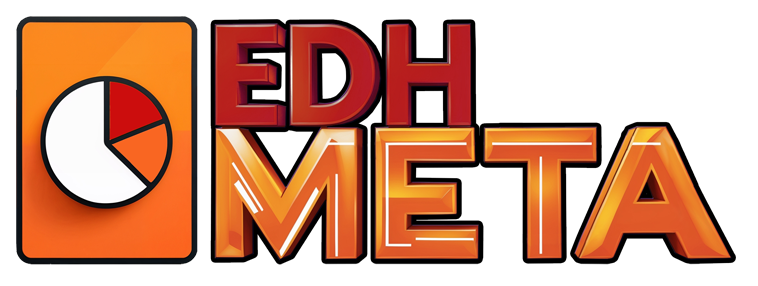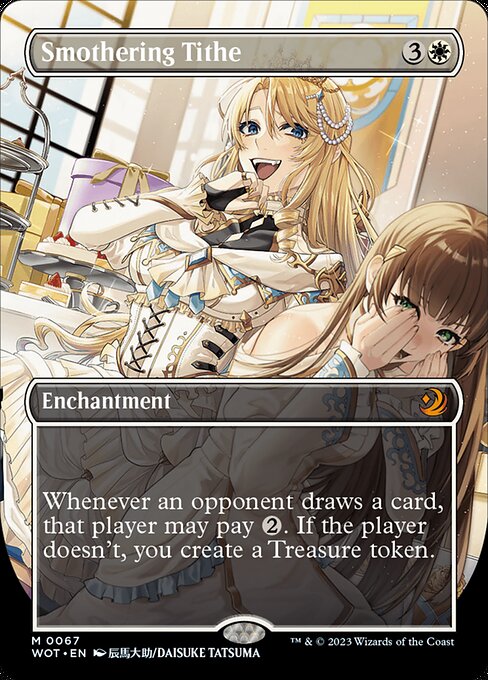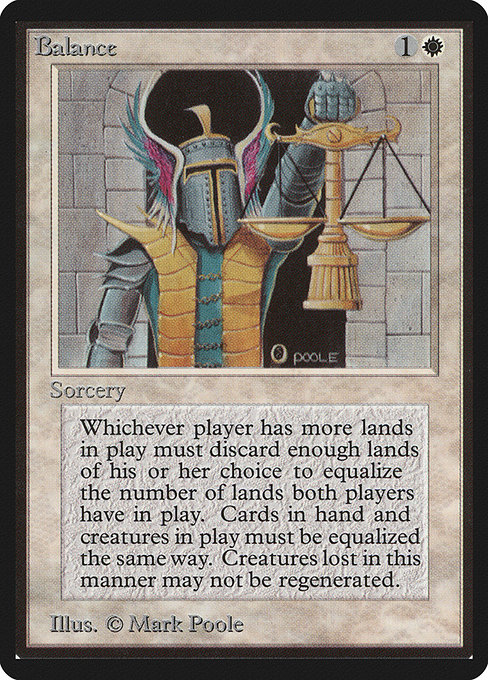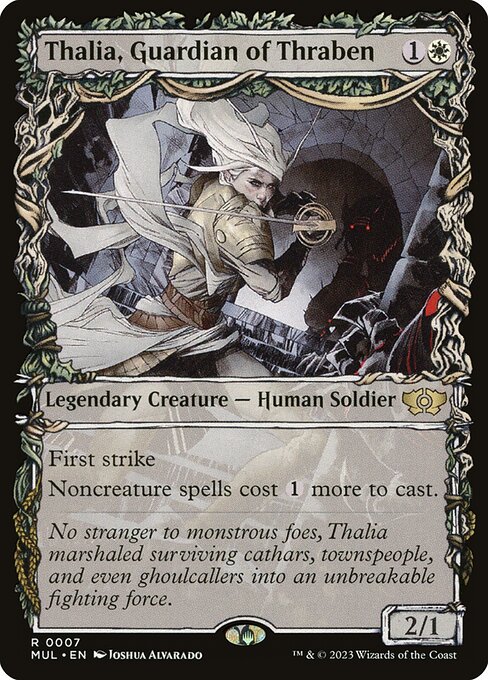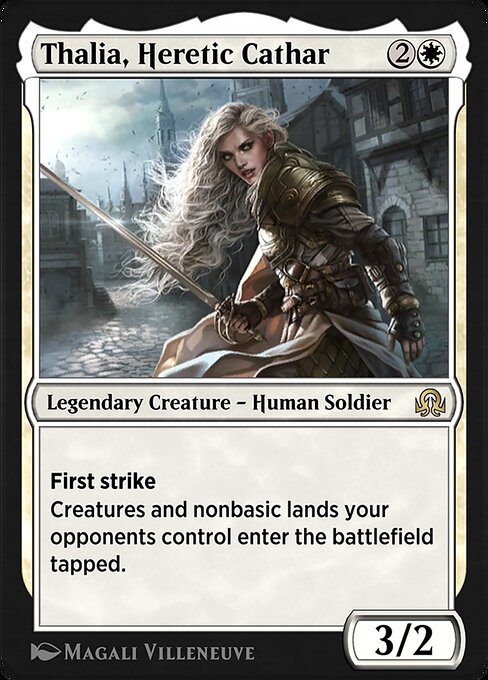In theory, white is a color focused on structured order and fair play. Unfortunately, in practice, we have found time and time again that this supposed premise of fair play is a lie. How can we compare a helpful hunter to a Ancient brontodon and see how the little cat consistently wins?
Perhaps you’ve heard of someone stealing victory in a tight spot with an angel's grace or maybe a flawless maneuver or perhaps you’re someone who is taking an interest in the format and doesn’t understand how a card like smothering tithe is considered so incredibly powerful. If that’s the case, welcome to a journey that will show you why having equal resources is completely different from having equal opportunities.
Without getting ahead of ourselves, let’s first focus on the white play plan, since we can’t abuse our tricks with the balance if we don’t have a way to put pressure on our opponents, right?
The simplicity of white focuses on starting the game by applying pressure turn 1, turn 2, turn 3, turn 4…..
The white weenie approach
Take, for example, these little guys,
In addition, it should be noted that white magic has other secret weapons up its sleeve, such as going wide or avoiding death thanks to its ability to gain life.
Now that we have a goal of how to close games, we need to add our personal touch by using our interactions to tip the scales in our favor. That’s where our true strength comes in, covering a range of scenarios like culling players resources, overwhelm slow players or simply delaying them long enough for us to fulfill the plan we had from the beginning.
White also has its contingency plan. In case of emergency, break the glass. If our plan is thwarted by our opponents, we will have access to cards like farewell or even austere command , also my favorite for this deck slash the ranks.
As I stated at the beginning, the most important thing from my perspective is to understand that white must take a structured approach because, unlike other colors, we don’t have explosive mana, but we can compensate for this with our ability to set limits and punish players who cross them , also In the future, we will talk about taxes and their consequences.
Take a look at the list below to get an idea of how to naturally maneuver the usual white game plan. Threats on the curve as we go wide, then proactively interacting with our opponents.
mtgazone .com/user-decks/x8ljed25hyarzofs6dfv
How about we now focus on an environment of slightly different creatures?
The dense population of threats that exist in our white color also has a different side. Unlike small creatures with big hearts that grow turn after turn, there are also other creatures whose sole motive is to make your opponent’s life an uphill battle.
One of my favorite ways to showcase white’s deceptive strength is through my Streetwise Lookout”] hate-bears build. On paper it looks fair—just small creatures and some disruption, but in practice it feels downright oppressive. Delney doubling the triggers of creatures like helpful hunter means I’m quietly drawing two cards at a time while still holding up interaction, and when
Add
The route to mysticism with enchantments
The truth is that it’s not always about moral ethics or sheer amount of armies, we also have another quite interesting approach up our sleeve: enchantments. It is not unlikely to find some anti-enchantment tool-kits, but what is likely is that their scope will be much smaller than the number of removals that exist on a normal table.
The color white has a fairly high affinity for finding enchantments at its disposal and also generating good value with them.
For this sample deck I’m thinking about playing god, quite literally. With
Do you know what’s best about having an indestructible commander? If you feel like it, you can use your enchantments to turn him into a giant threat, Voltron style.
Heliod has a bad reputation for stealing games with a “”””spear spewer””””, but in order to stay true to the basics, we won’t mention it for now…..
mtgazone .com/user-decks/xvt88xbv4tf6cljapdci
Wrapping It All Up
White thrives in the space between what everyone expects it to do and what it’s actually capable of. Sure, people see white as the “weenie” color, the one that plays tiny soldiers and resets the board when things get messy. But behind that reputation lies a toolbox that rewards patience, timing, and precision.
And this is where I circle back to what I said at the start: the philosophy of equality. On paper, white wants everyone to play by the same rules, with the same resources, on an even battlefield. But Commander isn’t like chess, it’s a game of politics, hidden synergies, and engines that snowball out of control. In practice, when white tries to level the playing field, someone always benefits more than someone else. Equal resources don’t create equal outcomes, and that’s where white can feel both noble and tragically flawed.
But that’s also what makes it fun. White forces you to think not just about what’s on your board, but about what’s fair for the table. Do you wipe the board now, knowing it slows down the scary player, but also ruins someone else carefully built setup? Do you play taxes and risk making yourself the early villain? Do you sit tight and wait for your moment, trusting that structure and patience will give you the upper hand?
When you play white, you’re not just playing the cards, you’re playing the philosophy. Sometimes it feels like a struggle, sometimes it feels like justice, and sometimes it feels like trickery disguised as fairness. That’s the paradox of white, and honestly, that’s why I love it, For now, if you want to understand white, just remember this: equal resources aren’t equal opportunities.
You always knew it, but you needed that little push to understand how to get into this curious, even ironic color.
I invite you to experiment with it and, well, try also to experiment with cards that are more… problematic than the ones we have described in this article. Destroy a few lands here and there so you can understand what would happen if the “fairest” color were a little more explosive like the other colors.
